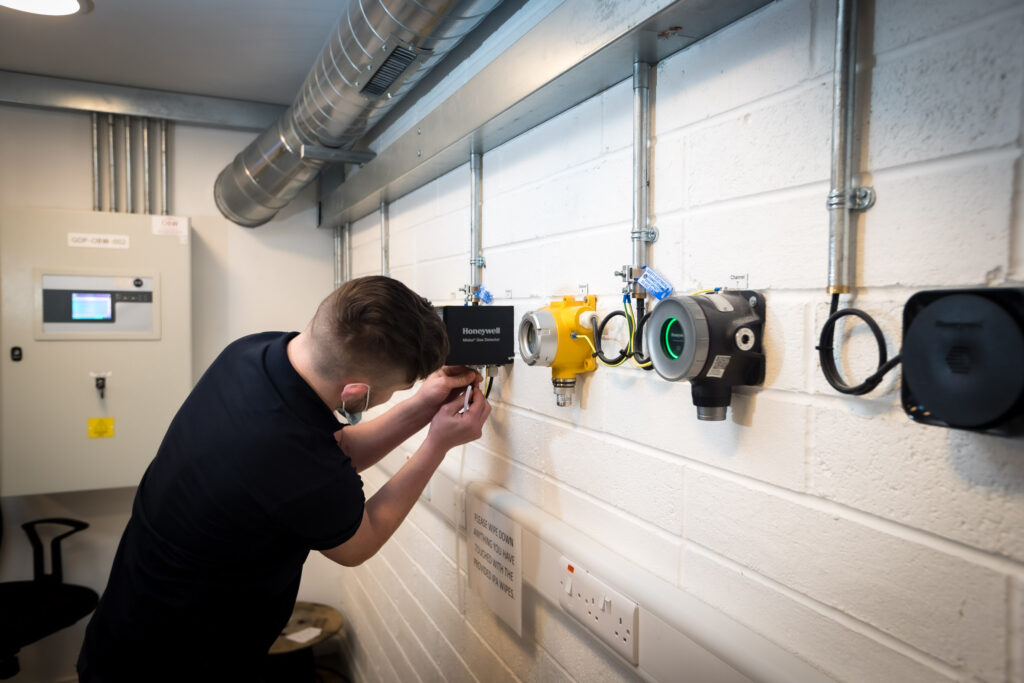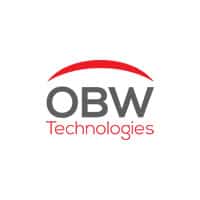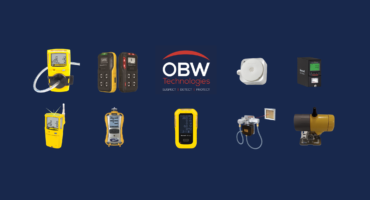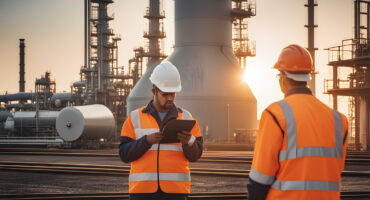In industries where hazardous gases are a constant threat, having the right equipment is only part of the solution. The full effectiveness of gas detection systems depends not just on the quality of the detectors but also on the expertise of the personnel using them. OBW Technologies provides state-of-the-art gas detection equipment, but we also recognise the critical role that training plays in ensuring the safe and effective use of this technology.
Proper training ensures that personnel know how to operate gas detectors, interpret their readings, and respond to alarms in a timely manner.
Certification through OBW’s training programmes further demonstrates a company’s commitment to safety, regulatory compliance, and operational efficiency.
One of the key components of gas detection training is ensuring that personnel fully understand the different types of gases they may encounter in their working environment. OBW Technologies offers gas detectors capable of monitoring a wide range of hazardous gases, but it is through proper training that operators learn how to effectively utilise this equipment.
Trainees are taught to differentiate between toxic, flammable, and inert gases, as each presents unique risks and requires specific detection methods. For instance, gases like carbon monoxide (CO) and hydrogen sulphide (H₂S) are odourless and lethal in confined spaces, while flammable gases such as methane (CH₄) pose explosion risks. Understanding the properties of these gases is crucial for selecting the appropriate gas detection equipment.
Through OBW’s training programmes, personnel learn not only which gases are most likely to be present in their specific work environment but also how to interpret the readings from detectors designed to identify these gases. This knowledge forms the foundation of a safe and proactive approach to gas detection, ensuring that OBW’s detectors are used to their full potential.
Gas leaks can have devastating consequences, from toxic exposures to explosions. While OBW Technologies’ gas detection equipment is designed to provide early warning, the real effectiveness comes when personnel are trained to recognise and respond to these hazards quickly and efficiently. Gas detection training ensures that workers are aware of the specific risks posed by various gases and how to leverage OBW’s equipment to mitigate these risks.
In training, personnel learn to identify conditions that could lead to gas leaks, such as equipment malfunctions, improper ventilation, or confined spaces where gases might accumulate unnoticed. They are also trained to interpret the signs of a potential gas leak, such as unusual odours, equipment failures, or abnormal detector readings.
Furthermore, OBW’s training incorporates case studies from real-world industrial accidents, helping to underline the importance of early detection and proper response.
Through hands-on exercises, participants are taught to quickly assess the severity of a situation and take appropriate action, ensuring that OBW’s gas detection equipment is used effectively to prevent accidents.

OBW Technologies offers a diverse range of gas detection equipment, including both portable and fixed systems, each designed to meet specific safety needs.
However, even the most advanced detectors require knowledgeable operators to ensure they are used effectively. That’s where OBW’s comprehensive training programmes come into play.
During gas detection training, personnel are introduced to the full range of OBW’s gas detectors. Trainees learn about the different types of detectors available, such as single-gas and multi-gas detectors, and their specific applications in different industries. Whether it’s a fixed system for continuous monitoring in a large facility or a portable detector for confined space entry, understanding how to select and use the correct detector is crucial.
Through practical, hands-on sessions, participants gain experience operating these detectors, learning the essential functions, from setup and calibration to real-time monitoring. This approach ensures that workers are not just familiar with the equipment, but are confident in its operation, helping them maximise the effectiveness of OBW’s cutting-edge detection systems.
Proper operation and calibration of gas detectors are essential for ensuring accurate readings and reliable performance. While OBW Technologies’ equipment is designed for precision, it requires trained personnel to handle the devices correctly and maintain their accuracy over time. This is why calibration training is a crucial component of OBW’s gas detection training programmes.
Trainees learn step-by-step how to operate gas detectors, including powering on the devices, adjusting settings for different environments, and performing regular function tests. The training also covers essential maintenance practices, such as replacing sensors and checking battery life, to prevent unexpected failures in the field.
Calibration is a key focus of the training, as improperly calibrated detectors can give inaccurate readings, potentially leading to hazardous situations.
OBW’s training ensures that personnel know how to perform bump tests and full calibrations, following manufacturer guidelines to ensure the accuracy of the equipment–and in the process, also extend their operational life.
By the end of this training, participants are well-equipped to operate and maintain OBW’s gas detectors, ensuring the highest level of safety and performance in the workplace.
A gas detector is only as useful as the person interpreting its readings. OBW Technologies’ gas detection equipment is designed to provide clear and accurate data, but it’s through proper training that personnel learn how to make informed decisions based on those readings.
In this part of the training, participants are taught to understand the different readings that gas detectors produce, such as gas concentrations, alarm thresholds, and exposure limits.
They also learn how to recognise normal versus abnormal readings, and when a reading indicates a potentially dangerous situation requiring immediate action. Understanding the significance of exposure limits like Time-Weighted Average (TWA) and Short-Term Exposure Limit (STEL) is crucial in keeping personnel safe from prolonged or acute exposure to hazardous gases.
The training also covers the different types of sensors used in OBW’s gas detectors, such as electrochemical or infrared sensors, and how these sensors react to specific gases.
Practical exercises help trainees practise interpreting real-time data in various scenarios, enabling them to respond quickly and effectively to changing conditions.
By the end of this section, trainees are confident in their ability to interpret gas detection readings accurately, ensuring a safer and more controlled working environment.
Gas detectors are designed to alert personnel when dangerous gas levels are detected, but knowing how to respond to these alarms is just as important as detecting the hazard itself. OBW Technologies’ training ensures that workers are prepared to take swift and decisive action in response to gas alarms, minimising risk and ensuring the safety of all personnel.
In this part of the training, participants are taught to recognise the different types of alarms emitted by OBW’s gas detectors—whether visual, audible, or vibrating alerts—ensuring that no alarm goes unnoticed, even in noisy or chaotic environments. Personnel also learn the correct procedures for responding to alarms based on the severity of the situation, including when to initiate an evacuation or escalate the response to emergency services.
By the end of this module, participants are fully prepared to respond to gas alarms, helping to prevent accidents and maintain safety in the workplace.
For gas detection equipment to remain effective, it must be regularly maintained and inspected. OBW Technologies provides highly reliable gas detectors, but their performance depends on consistent upkeep. That’s why maintenance and inspection training is a critical part of OBW’s comprehensive gas detection courses.
In this section of the training, personnel are taught how to carry out routine maintenance tasks, such as cleaning sensors, replacing filters, and ensuring battery life is sufficient for safe operation. Regular inspections are also covered, helping workers to identify potential issues, such as sensor degradation or calibration drift, before they compromise the equipment’s accuracy.
Trainees are introduced to the concept of preventative maintenance, which helps extend the lifespan of gas detectors and ensures that they are always ready for use. OBW’s training also covers the importance of keeping detailed maintenance logs, which can be essential for regulatory compliance and auditing purposes.
By the end of this training module, participants are fully equipped to maintain and inspect OBW’s gas detection equipment, ensuring that it performs at its best and keeps the work environment safe.
For gas detection training to remain effective, it must be regularly updated and reinforced. As gas detection technology advances and new regulations emerge, continuous learning becomes essential. OBW Technologies offers not only top-tier gas detection equipment but also ongoing training to ensure that personnel are always prepared to face new challenges.
OBW’s training emphasises hands-on experience, ensuring that trainees are not only familiar with the theory but also confident in applying their skills in real-world situations. Practical exercises and simulations provide workers with the opportunity to practise using OBW’s gas detection equipment in various scenarios, from routine monitoring to emergency responses.
Comprehensive gas detection training, alongside reliable equipment, is essential for creating a safe working environment. OBW Technologies provides both the cutting-edge gas detection equipment you need and the training programmes to ensure your personnel can use it to its full potential. Proper training not only improves safety but also enhances operational efficiency and regulatory compliance.
For more information on how OBW Technologies can help with your gas detection training and certification needs, visit our Gas Monitor Training page or contact us directly. Let us help you create a safer and more compliant workplace.
From the Blog



If you have any questions about our products or services, please feel free to contact us.

Join our mailing list to receive the latest news and updates from our team.